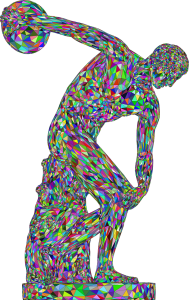The Evolution of Inclusive Sports Leagues

Pioneers of Inclusion
The concept of LGBTQ+ inclusive sporting leagues wasn’t always as prevalent as it is today. The initial strides toward inclusivity in sports can be traced back to the late 20th century when the courage of a few began to challenge the status quo. In the 1980s, amidst the backdrop of the AIDS crisis and heightened homophobia, grassroots organizations like the Gay Games laid the foundation for what would become a global movement. The Gay Games, founded by Dr. Tom Waddell, broke new ground by providing a safe space for LGBTQ+ athletes to compete openly and proudly. Fast forward to the early 2000s, and we see the establishment of leagues such as the National Gay Flag Football League (NGFFL) in the United States, which not only championed the cause for LGBTQ+ athletes but also emphasized the power of community and solidarity.
The Role of Professional Allies
The journey towards inclusivity in sports has also been significantly impacted by allies within professional leagues. High-profile athletes and teams have played a pivotal role in breaking down barriers. Take, for example, the “You Can Play Project,” launched in 2012, which saw players from the NHL come forward to support LGBTQ+ athletes, sending a powerful message that skill and work ethic are what define a player, not their sexuality or gender identity. Such endorsements have helped normalize LGBTQ+ participation in mainstream sports, fostering a more accepting and inclusive culture.
From Traditional to Esports
The expansion of LGBTQ+ inclusive leagues has not been limited to traditional physical sports. The realm of esports has seen a significant rise in inclusivity, with organizations like the “Gamers for Equality” tournaments hosted by Ubisoft, promoting diversity and inclusion within the gaming community. This evolution reflects a broader societal shift towards accepting and celebrating LGBTQ+ identities in all arenas of competition.
Grassroots Movements and Community Leagues
The backbone of the LGBTQ+ inclusive sports movement lies in the grassroots initiatives and local community leagues that have sprung up across the globe. From queer soccer leagues in London to inclusive rugby teams in Amsterdam, these organizations offer a platform for athletes to engage in sports without fear of discrimination or exclusion. These leagues not only provide a competitive outlet but also act as a vital support network, reinforcing the message that everyone deserves a chance to play.
Challenges and Triumphs
The path to LGBTQ+ inclusivity in sports has not been without its challenges. Resistance from conservative factions within sports organizations, lack of funding, and societal prejudice have all posed significant obstacles. Yet, the resilience of the LGBTQ+ sports community has turned these challenges into triumphs. The visibility and success of LGBTQ+ athletes in top-tier competitions, like the Olympics, have served as a beacon of hope and a testament to the progress made. Athletes like Tom Daley and Megan Rapinoe have become icons of success and inclusivity, using their platforms to advocate for LGBTQ+ rights within and beyond the sports world.
What’s Next for LGBTQ+ Inclusive Sports?
As we look to the future, the evolution of LGBTQ+ inclusive sporting leagues is poised to accelerate. With increasing societal acceptance and a growing recognition of the importance of mental health and well-being, sports organizations at all levels are beginning to implement more inclusive policies. The next frontier involves tackling the nuances of inclusion, such as ensuring trans and non-binary athletes find equitable opportunities to compete. Initiatives like the International Olympic Committee’s (IOC) framework on fairness, inclusion, and non-discrimination on the basis of gender identity and sex variations are indicative of the direction in which sports inclusivity is headed.
Key Milestones in LGBTQ+ Sports Inclusivity
The evolution of LGBTQ+ inclusivity within sporting leagues has been marked by several key milestones that underscore the progressive changes and growing acceptance within the sports community. These milestones not only highlight the achievements but also set the stage for future advancements in ensuring that sports become a universally welcoming space for all athletes, regardless of their gender identity or sexual orientation.

- 1982: The inaugural Gay Games were held in San Francisco, serving as a groundbreaking event that promoted inclusivity and competition in a supportive environment.
- 1990: The International Gay and Lesbian Football Association (IGLFA) was established, fostering inclusivity in soccer, a sport beloved worldwide.
- 2004: The “You Can Play” project was launched, advocating for LGBTQ+ athletes’ rights and participation across all sports levels.
- 2012: The first professional male athlete in a major American team sport, Jason Collins of the NBA, came out as gay, breaking significant barriers in sports.
- 2015: The creation of the Pride House International, a space for LGBTQ+ athletes, fans, and allies during international sporting events, became a regular feature at the Olympics and other major competitions.
- 2021: Laurel Hubbard became the first openly transgender woman to compete in the Olympic Games, representing New Zealand in weightlifting at the Tokyo Olympics.
As the landscape of sports continues to evolve, these moments serve as important reminders of how far the community has come and the ongoing work needed to ensure sports can truly be a place for everyone.
